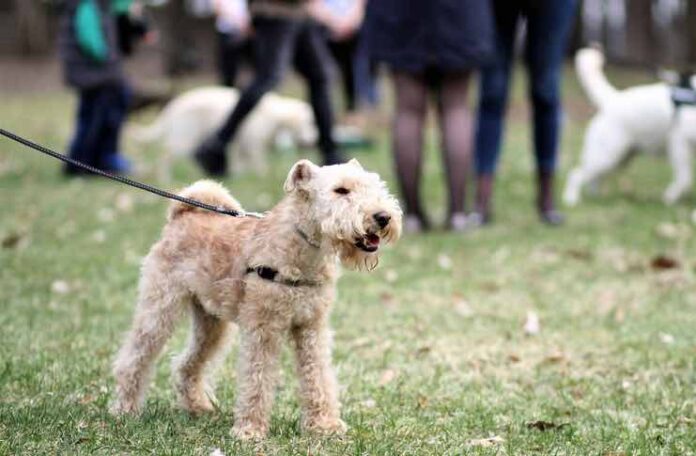For dog owners, there’s something wonderfully relaxing about watching their canine companions frolic and play at the dog park. This open space offers a unique opportunity for dogs to socialize, get some exercise, and burn off pent-up energy. However, not every park interaction is a positive one. Sometimes, what starts as playful fun can quickly turn aggressive. How can dog owners navigate these situations and ensure both they and their pets remain safe?
Let’s dive into the telltale signs of aggressive play and strategies for managing challenging dog park dynamics.
1. Recognize The Warning Signs Of Aggression
One of the most alarming consequences of aggressive play is dog bites. But, a bite doesn’t always come out of the blue. There are often preceding signs of escalating tension.
Growling, snapping, raised hackles, stiff body posture, and intense staring can all indicate that a playful situation is about to turn aggressive. Being aware of these signs allows owners to intervene before a situation deteriorates further.
2. Differentiate Between Play And Aggression
It’s essential to understand the difference between aggressive behavior and normal play. Dogs will often ‘mouth’ each other, bow, and engage in chase games. The play may look rough, but as long as both dogs seem relaxed and are taking turns in their roles (chaser and chased), it’s typically a good sign. Concerns should arise when one dog constantly seems to be the target or when body language indicates distress.
3. Use Positive Reinforcement
Positive reinforcement is your best friend (after your dog, of course!).
Always carry treats or your dog’s favorite toy to the park. If you see your dog starting to get overly excited or display the beginnings of aggressive behavior, call them over, get their attention, and reward them when they listen. This redirection technique can prevent potential confrontations.
4. Create Distance
If you sense that a situation is escalating, it’s a good idea to separate the dogs immediately. You can call your dog to come to you, or if that doesn’t work, calmly walk over and use your body to block or separate the dogs.
Remember, the key is to act calmly and confidently, as dogs often feed off their owners’ emotions.
5. Establish Recall
One of the most valuable commands a dog can learn for the park environment is a solid recall. This means your dog comes to you immediately when called, no matter the distraction. Regular training sessions at home and in different environments will solidify this command, making it easier to manage potential conflicts at the park.
6. Know When To Leave
Sometimes, the best decision is simply to leave the park. If your dog is constantly being targeted by other dogs, or if they’re displaying aggressive behavior, it might not be a good day for them. It’s essential to prioritize safety over socialization. Remember, not every park visit will be perfect, and that’s okay.
7. Educate Yourself
Educate yourself about dog breeds and their typical play styles. Some breeds play rougher than others, and what might seem aggressive to an outsider is just their natural play behavior. Knowing these nuances can help you assess situations more accurately and decide when to intervene.
8. Communicate With Other Dog Owners
Communication is crucial. If you’re unsure about an interaction or feel uncomfortable with another dog’s behavior, don’t hesitate to speak with their owner. Most dog owners will appreciate a polite heads-up and will work with you to manage the situation.
9. Schedule Playdates
If your dog has made a few friends at the park, consider setting up scheduled playdates. This allows you to control the environment and the dogs involved, ensuring a safer and more relaxed play session for all.
Conclusion
The dog park can be a place of pure joy and excitement for our furry friends. However, as with any environment where animals interact, there’s potential for conflicts to arise. By staying vigilant, understanding canine body language, and utilizing positive reinforcement techniques, dog owners can ensure that each park visit is a positive experience for everyone involved.
After all, with a little effort and understanding, our four-legged pals can enjoy their playtime while we, their human counterparts, can have peace of mind.



